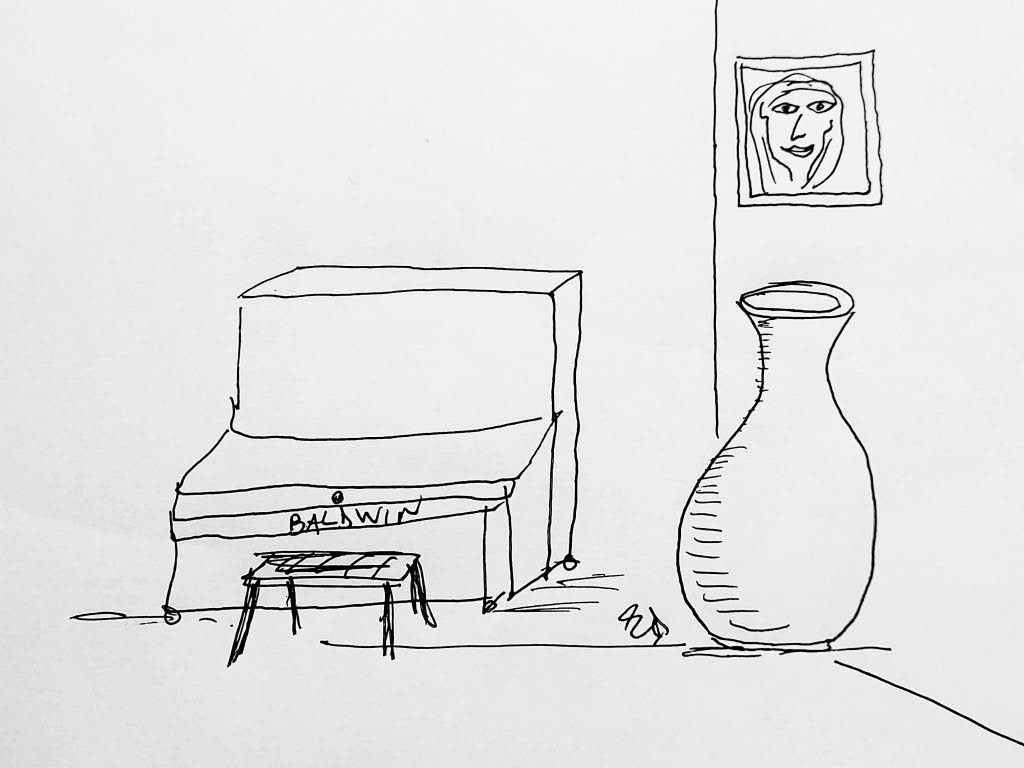The vase that had a lot to say

Some nights ago, I was one of four people present for dinner at a friend’s newly-built home. As it was my first time there, I got a tour of the interior.
The house, simple and spacious, with amazing ocean views, was populated by many arty, antique and interesting objects.
Beyond the functional importance of everyday items (appliances, cutlery, etc.), everything in the house seemed to be imbued with a sense of sentimentality, deeper meaning or reason for being – and had an accompanying story.
“Do you like that vase?” our host said, pointing to a tall, curvaceous one in a corner.
“Not really,” I concluded after a short while.
While the vase did not appeal to me emotionally or visually, it was not ‘ugly’. From what I can recall, it was about three or four feet tall, with a glossy black surface peppered with what looked like gold flecks. Something about it reminded me of a Gustav Klimt painting and, while I like Klimt’s work, the vase still did not ‘grab’ me.
“Guess what it’s made of,” he said.
I stared at it for a while, eventually guessing that it was made of glazed clay or fibreglass.
“No,” he said, laughing in a you-will-never-guess way.
I went closer and knocked on the surface of the vase. Surprisingly, it sounded almost hollow.
“What is this?”
“Papier maché!”
I was instantly awed. What a wonderful creation this suddenly was – or rather, had always been – just that I had not seen it that way before.

The piece came to life and became even more intriguing as he told me the story behind it – how he had first met one like it on his travels, but could not afford it at the time, then years later had come across this particular one in another country, being sold for next to nothing because of "slight damage." That "damage" was light scuffing around the base, revealing what must have been white paper beneath the black paint.
Thinking back to the vase as I write this, I perceive it almost anthropomorphically. It could have been a person, standing alone in a dimly-lit corner at a small social gathering – unnoticed, a "wall flower", female (based on its curved shape).
Had this really been a person, dinner guests A and B, observing from a distance, might have been discussing her, along the lines of the opening conversation my friend and I had had about the vase.
A: “Do you like that person?”
B: (after staring at her for a while) “Not really.”
A: “Guess what she’s ‘made of’/what she does for a living.”
B eventually guesses (stereotypically so) that she is a quiet librarian.
A laughs: “No! You’ll never guess.”
When A eventually reveals who and what the woman is, B is awed. What an amazing person this suddenly is – or rather, must have always been, just that she had not been perceived in that way before.
Above the vase was the painting of a woman’s face. While not an antique, the piece had an enigmatic, ancient essence, reminding me of centuries-old paintings of English people displayed in quiet, hallowed corridors of old heritage houses, museums or art galleries. It was one of those paintings in which the eyes of the subject follow you wherever you go.
“Who is this?” I asked.
My question led to a few stories about our host’s dear departed sister. From what struck me as her canvas "window", she gazed upon what I then learned was her old brown upright piano, standing against the wall a few feet away.
“May I play it?”
“Of course.”
Even though I reached Grade 7 in piano, decades of not practicing has resulted in an inability to recall tunes I used to play with fluidity. I fumbled through the beginning of one of my favourite – Beethoven’s Moonlight Sonata – before tinkling out whatever I could recall of some of my own long-ago compositions. Despite the fact that the piano was old and many of its yellowing keys were sticking, it had a charming sound.
“That was beautiful,” one other friend said when I got up from the piano stool.
Looking back, I see how the elements of that moment (the story, the painting, the piano) brought the vase to life – like many a quiet person, unnoticed until pointed out, observing from a corner; shy, feeling awkward about speaking up but when the words finally come they are like music and everyone listens.


Comments
"The vase that had a lot to say"